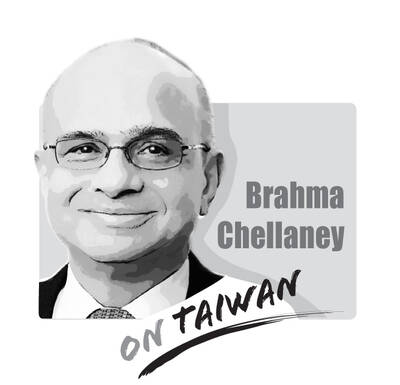After the Ministry of Health and Welfare amended the long-term care payment system, media reported that a monthly salary of NT$40,000 for long-term care workers would no longer be just a dream. This means that Taiwanese university graduates would not have to settle for a starting salary of NT$22,000 per month if they are willing to work hard and devote themselves to what they are doing.
Low pay is not the only reason for the nation’s shortage of long-term care workers, there is also the problem of how to retain talented people within the profession.
Traditionally, people show the greatest respect toward doctors. While they are indispensable to any medical team, cross-disciplinary cooperation is necessary to give patients the best care possible.
Due to the public’s lack of understanding of professional division of labor and because there is no proper system for promotion for medical workers, it is difficult for them to gain the recognition they deserve.
Under these circumstances, many qualified nurses, physiotherapists and pharmacists have no choice, but to change careers or look for employment abroad.
There are many schools offering courses on long-term care, but if there is no system for promotion, and if people are not recognized and respected for what they do, they would leave the profession.
To reduce the outflow of talented people from the nation’s long-term care sector, the government should raise their salaries.
However, the salary hikes should not be the same across the board; the satisfaction rates of patients and their family members should be taken into consideration.
A patient of mine has employed a Taiwanese caregiver and is paying a high salary, because the caregiver is willing to learn, is easy to communicate with, asks serious questions during treatment and helps the patient do physical therapy activities at home, enabling the patient to achieve double the results with half the effort.
To build an adequate promotion system, the nation could learn from Japan’s commercialization of the long-term care industry. Japanese care providers are formally called “care workers.” They can take a national certification exam and be promoted to “case managers” and be qualified to run a care-service institution if they pass.
Taiwanese care providers can enter a job after taking lessons and accumulating practical work experience, but there is no chance for promotion.
If the long-term care industry was commercialized, a promotion system could be introduced.
Care providers are not generally treated as experts and some patients’ family members treat care workers as servants, asking them to do chores. While it might be necessary for caregivers to help elderly people who live alone with housework, it would be much better for them to focus on care services.
They should help patients cough up sputum, feed them, turn them over, help them take a shower and exercise. Patients’ family members should also learn these techniques and use them appropriately to help provide the best care.
The work hours of caregivers are limited, while the family is responsible for taking care of the patient the rest of the time.
The retention of talented long-term care workers should not just be a matter of offering higher salaries. It is equally important to teach people about the medical role of care providers. If people can show long-term care professionals respect and provide the positive feedback that they deserve, more talented personnel would be willing to enter the long-term care industry.
Cho Chiung-yu is an associate professor at National Cheng Kung University’s Department of Physical Therapy.
Translated by Eddy Chang

Taiwan stands at the epicenter of a seismic shift that will determine the Indo-Pacific’s future security architecture. Whether deterrence prevails or collapses will reverberate far beyond the Taiwan Strait, fundamentally reshaping global power dynamics. The stakes could not be higher. Today, Taipei confronts an unprecedented convergence of threats from an increasingly muscular China that has intensified its multidimensional pressure campaign. Beijing’s strategy is comprehensive: military intimidation, diplomatic isolation, economic coercion, and sophisticated influence operations designed to fracture Taiwan’s democratic society from within. This challenge is magnified by Taiwan’s internal political divisions, which extend to fundamental questions about the island’s identity and future
Media said that several pan-blue figures — among them former Chinese Nationalist Party (KMT) chairwoman Hung Hsiu-chu (洪秀柱), former KMT legislator Lee De-wei (李德維), former KMT Central Committee member Vincent Hsu (徐正文), New Party Chairman Wu Cheng-tien (吳成典), former New Party legislator Chou chuan (周荃) and New Party Deputy Secretary-General You Chih-pin (游智彬) — yesterday attended the Chinese Communist Party’s (CCP) military parade commemorating the 80th anniversary of the end of World War II. China’s Xinhua news agency reported that foreign leaders were present alongside Chinese President Xi Jinping (習近平), such as Russian President Vladimir Putin, North Korean leader Kim
Taiwan People’s Party (TPP) Chairman Huang Kuo-chang (黃國昌) is expected to be summoned by the Taipei City Police Department after a rally in Taipei on Saturday last week resulted in injuries to eight police officers. The Ministry of the Interior on Sunday said that police had collected evidence of obstruction of public officials and coercion by an estimated 1,000 “disorderly” demonstrators. The rally — led by Huang to mark one year since a raid by Taipei prosecutors on then-TPP chairman and former Taipei mayor Ko Wen-je (柯文哲) — might have contravened the Assembly and Parade Act (集會遊行法), as the organizers had
Minister of Foreign Affairs Lin Chia-lung (林佳龍) last week made a rare visit to the Philippines, which not only deepened bilateral economic ties, but also signaled a diplomatic breakthrough in the face of growing tensions with China. Lin’s trip marks the second-known visit by a Taiwanese foreign minister since Manila and Beijing established diplomatic ties in 1975; then-minister Chang Hsiao-yen (章孝嚴) took a “vacation” in the Philippines in 1997. As Taiwan is one of the Philippines’ top 10 economic partners, Lin visited Manila and other cities to promote the Taiwan-Philippines Economic Corridor, with an eye to connecting it with the Luzon